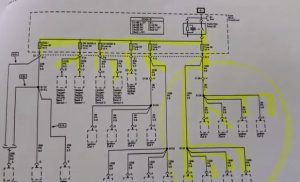With news of possible tariffs on imported vehicles and parts looming, many vehicle owners are asking a crucial question: Is it smarter to keep my current car, or should I think about replacing it now?
Before you make a decision based on fear or guesswork, take a step back. Be informed. Be empowered. Ask yourself the right questions and make a plan that puts you in control—whether you’re driving your current vehicle another 50,000 miles or exploring what’s next.
Here are 5 Steps Every Vehicle Owner Can Take Right Now to feel more confident about their ride and their choices:
1. Check Your Odometer. Now Check Your Oil Change Sticker.
Are you overdue for maintenance by time, mileage—or both?
If your last oil change was 6 months ago but you’ve only driven 2,000 miles, you’re still due. Oil breaks down over time, not just distance. Flip through your service records—have you been consistent, or is maintenance more of an “as I remember it” type of thing?
Consistency matters. It’s one of the best ways to protect your investment and keep your vehicle running strong.
2. Mileage Isn’t Just a Number—It’s a Maintenance Timeline.
How many miles are on your car today? What services have you had done along the way?
For example, at 30,000 and 60,000 miles, most manufacturers recommend major service intervals—things like transmission fluid changes, spark plugs, air filters, brake system flushes, and more.
If your vehicle is sitting at 68,000 miles and hasn’t seen a service bay beyond oil changes and tire rotations, you could be sitting on a pile of deferred maintenance. That doesn’t automatically mean it’s time to sell—but it does mean you need a clear picture of what’s due.
3. Dashboard Warning Lights: Don’t Ignore the Obvious.
Is that Check Engine light just “always on”? Been ignoring your ABS or tire pressure warnings because “it’s probably fine”?
Here’s the thing—warning lights are your car’s way of saying: Something’s wrong. Please pay attention. Even if the car is still running fine, small problems can lead to expensive repairs if left unchecked. And in some cases, they’re safety-related.
Get them diagnosed. Better to know and plan than be caught off guard.
4. Major Repairs Ahead? Do the Math.
Maybe your mechanic has been telling you your brakes, struts, or timing belt are due soon. Maybe your tires are worn and winter’s coming.
This is where things get financial. Ask yourself:
How much are those upcoming repairs going to cost?
What’s your vehicle’s current trade-in value or private-party sale price?
Could that repair money + your vehicle’s value put you into something newer and more reliable?
Sometimes, fixing it makes sense. Other times, it’s a better investment to cut bait and move on—especially if tariffs are expected to drive prices higher.
5. Have a Trusted Mechanic? Ask Them the Bigger Questions.
A great mechanic isn’t just there to fix your car—they’re a partner in helping you keep it healthy or helping you decide when to let go.
Ask them:
- Do they see common repairs becoming harder or more expensive due to part shortages or vehicle age?
- Is your make/model one they believe will stay reliable and serviceable for another 3–5 years?
- What would they do if it were their car?
If you don’t have a go-to mechanic, now’s the time to find one. An honest second opinion can save you thousands.
Final Thoughts: Empowerment Over Panic
The possibility of new tariffs has a lot of people feeling rushed into decisions. But your car is a long-term tool—and a big investment. Whether you keep it or move on, you want to do it with confidence, not anxiety.
Use these steps to evaluate where you are right now. Talk to professionals. Think long-term.
And most importantly: trust your gut once the facts are clear.



